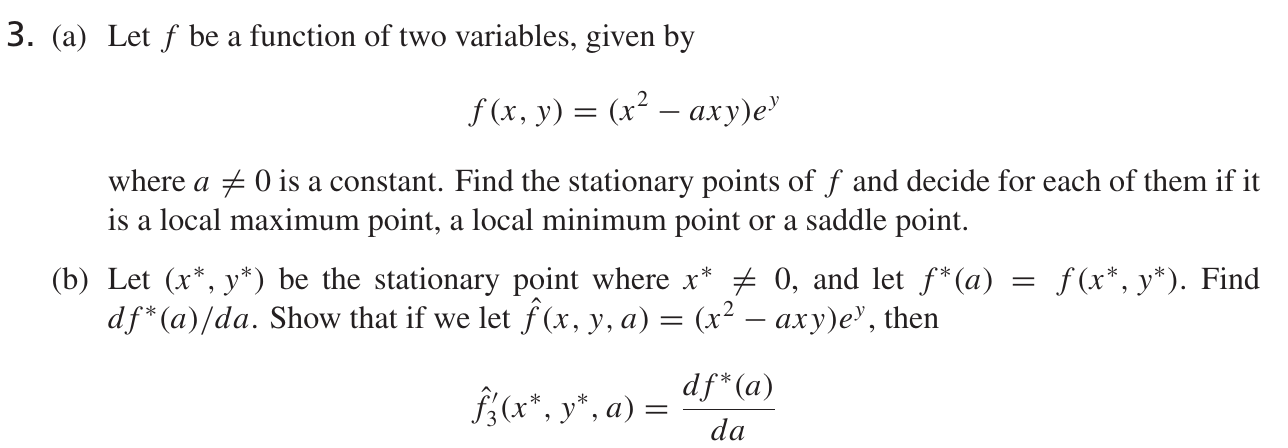Early exposure of economics students to symbolic computation in Python
2024-11-07
… is a mixed bag.
Follow along

Or visit https://bit.ly/pes-py.
Context
- DLSU 1st year economics majors
- Last 3-unit maths course before entering the majors – focus is on optimization
- A 1-unit lab course runs along concurrently
- These two courses are taught by separate instructors who did not coordinate at all.
- This time, I taught both and students were informed in advance of the appropriate sections to enroll.
Setup
- No Python background required (yours truly never used Python until I taught the lab)
- No nasty installation of Python and other libraries required
- Use freely available computing interface: SymPy Live Shell, then Google Colab (latter one “freely”)
- Go directly to doing actual work, worry about weird stuff later
- Plotting limited, had to use Desmos for expediency
My intended goals
- Every student should be able to open their textbook (or references) and then work on examples and answer the exercises using SymPy.
- Even better if they could write a full solution with text, explanations, and mathematical reasoning.
- Best case: All of the above, giving value to setting up a computational representation of a problem rather than “dump everything into computer and cross your fingers”
Constraints
- Meet only one hour once a week
- Meet only 12 times, but 3 of those times are exams
- Introduce every basic thing early vs introduce things just-in-time
- Work individually vs work with groups
- Topics in “maths” course should be in sync vs relegate some “symbolically overwhelming” topics to lab
Constraints
- Meet only one hour once a week
- Meet only 12 times, but 3 of those times are exams
Introduce every basic thing earlyvs introduce things just-in-time- Work individually vs
work with groups - Topics in “maths” course should be in sync vs relegate some “symbolically overwhelming” topics to lab: A mix happened.
Example: Finding extrema andd doing some comparative statics
From Essential Mathematics for Economic Analysis:

Thinking in terms of SymPy when developing a solution
obtain the stationary points of \(f\).
- Declare variables.
- Define a function.
- Know how to calculate derivatives.
- Know how to solve a system of equations.
Thinking in terms of SymPy when developing a solution
determine whether each stationary point is a local maximum, local minimum, saddle point, or “cannot tell”.
- Enter an expression.
- Make substitutions.
- Check whether conditions are satisfied.
Thinking in terms of SymPy when developing a solution
produce an expression of the maximized value of \(f\).
- Make substitutions.
produce an expression of how the maximized value of \(f\) going to be affected by changes in \(a\).
- Make substitutions.
- Know how to calculate derivatives.
- Do this mechanically or use Envelope Theorem.
Code
- Setup the function to be optimized.
- Find stationary points.
Code, continued
- Determine if you have a local max, local min, or saddle point.
{x: 0, y: 0}Code, continued
- Effect of changing \(a\) on \(f\)
“Weird” stuff
You have seen a preview of some “weird” stuff.
- Indices start at 0.
- The displayed output may have some variations depending on how you want to present and use them in subsequent calculations.
Weird stuff, continued
- There is a distinction between the numeric and the symbolic.
Example: Nastier comparative statics
From Essential Mathematics for Economic Analysis:

Thinking in terms of SymPy when developing a solution
Declare variables, define functions, take derivatives, make substitutions, solve systems of equations
- Same set of skills!
- But we work with functions which are not specified
Key step is to distinguish regular inputs \(K\), \(L\) against optimal inputs \(K^*\), \(L^*\)
Code
- Setup profit function.
- Distinguish regular inputs \(K\), \(L\) against optimal inputs \(K^*\), \(L^*\).
Code, continued
- Solve systems of equations (quite a mess, not very clean looking output)
x, y = symbols('x y', real = True)
eq1 = Derivative(Derivative(pi, K).doit().subs({K:Kstar, L:Lstar}), w).doit().subs({Derivative(K, w).subs({K:Kstar, L:Lstar}):x, Derivative(L, w).subs({K:Kstar, L:Lstar}):y})
eq2 = Derivative(Derivative(pi, L).doit().subs({K:Kstar, L:Lstar}), w).doit().subs({Derivative(K, w).subs({K:Kstar, L:Lstar}):x, Derivative(L, w).subs({K:Kstar, L:Lstar}):y})
solve([eq1, eq2], [x, y], dict = True)[{x: -Derivative(F(K(w, r, p), L(w, r, p)), K(w, r, p), L(w, r, p))/(p*Derivative(F(K(w, r, p), L(w, r, p)), (K(w, r, p), 2))*Derivative(F(K(w, r, p), L(w, r, p)), (L(w, r, p), 2)) - p*Derivative(F(K(w, r, p), L(w, r, p)), K(w, r, p), L(w, r, p))**2),
y: Derivative(F(K(w, r, p), L(w, r, p)), (K(w, r, p), 2))/(p*Derivative(F(K(w, r, p), L(w, r, p)), (K(w, r, p), 2))*Derivative(F(K(w, r, p), L(w, r, p)), (L(w, r, p), 2)) - p*Derivative(F(K(w, r, p), L(w, r, p)), K(w, r, p), L(w, r, p))**2)}]Code, continued
- Make things look nicer by churning out LaTeX code:
expr = solve([eq1, eq2], [x, y], dict = True)
from IPython.display import display, Math
display(Math('%s' %latex(expr)))\(\displaystyle \left[ \left\{ x : - \frac{\frac{\partial^{2}}{\partial L{\left(w,r,p \right)}\partial K{\left(w,r,p \right)}} F{\left(K{\left(w,r,p \right)},L{\left(w,r,p \right)} \right)}}{p \frac{\partial^{2}}{\partial K{\left(w,r,p \right)}^{2}} F{\left(K{\left(w,r,p \right)},L{\left(w,r,p \right)} \right)} \frac{\partial^{2}}{\partial L{\left(w,r,p \right)}^{2}} F{\left(K{\left(w,r,p \right)},L{\left(w,r,p \right)} \right)} - p \left(\frac{\partial^{2}}{\partial L{\left(w,r,p \right)}\partial K{\left(w,r,p \right)}} F{\left(K{\left(w,r,p \right)},L{\left(w,r,p \right)} \right)}\right)^{2}}, \ y : \frac{\frac{\partial^{2}}{\partial K{\left(w,r,p \right)}^{2}} F{\left(K{\left(w,r,p \right)},L{\left(w,r,p \right)} \right)}}{p \frac{\partial^{2}}{\partial K{\left(w,r,p \right)}^{2}} F{\left(K{\left(w,r,p \right)},L{\left(w,r,p \right)} \right)} \frac{\partial^{2}}{\partial L{\left(w,r,p \right)}^{2}} F{\left(K{\left(w,r,p \right)},L{\left(w,r,p \right)} \right)} - p \left(\frac{\partial^{2}}{\partial L{\left(w,r,p \right)}\partial K{\left(w,r,p \right)}} F{\left(K{\left(w,r,p \right)},L{\left(w,r,p \right)} \right)}\right)^{2}}\right\}\right]\)
Advantages
- Chance to see theory in a different form
- Teach programming (in a narrow sense) indirectly
- Be comfortable with the “command line”
- Create dynamic documents and weave Python calculations into documents – Learn LaTeX, HTML, Markdown indirectly
- Taking notes in line with the current generation
- “Dumping everything on a computer” mentality can somehow be corrected.
Disadvantages
- AI is literally built in to Google Colab
- Can be frustrating to move around the lab troubleshooting every little thing
- 1 hour goes by so fast
- Unclear whether skills get transferred to major courses
- Not very natural to learn syntax and write code: Why? It requires thinking and a suspension of disbelief.
- Plotting can be unwieldy! Desmos might be better for something quicker.
Student evaluation
Based on 3 evaluations during the first 4 to 5 meetings:
- Roughly 50%-60% were distracted by other open tabs.
- Roughly 80%-90% of students can see tangible evidence that the lectures are connected to the lab.
- Roughly 60% of students forgotten commands from past labs.
- Not everyone can finish all exercises
Exam styles
- Write code by hand for first half and then answer the same exercise with a computer
- A report with a full solution and explanation could be required.
- Students have a hard time writing self-contained code on paper which will run without error.
- Some students failed the course.
Should you do it? Yes, if you …
- Want to pick up something new under pressure (dignity as an instructor at stake!)
- Want to write a paper, create new materials, and present at PES (or maybe some other conferences!)
- Want to really understand how the courses at your institution mesh together
- Reduce the tedious calculations and make room for other material
Should you do it? No, if you …
- Do not have enough patience: troubleshooting can be taxing
- Have grander plans than what could be achievable given the constraints
- Feel that it is highly unlikely that students will use these skills in their major or even in the “real world”
Final advertisements
| Slides | Lecture/lab course webpage | My webpage | Even earlier exposure |
 |
 |
 |
 |
Questions, proposals, collaboration?
Email me at andrew.pua@dlsu.edu.ph or approach me, I’ll give you my card.